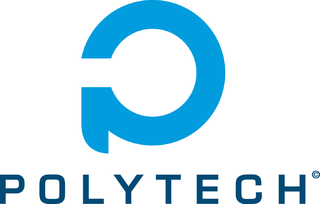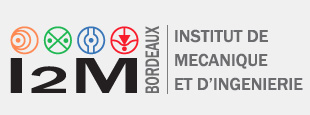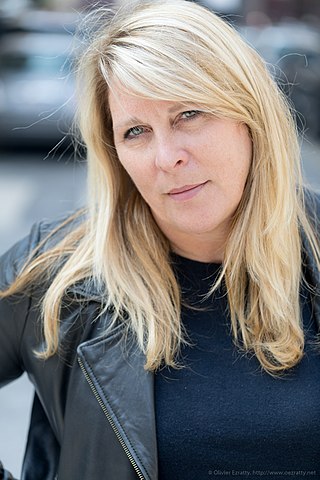
The École centrale de Lyon (ECL) is a research university in greater Lyon, France. Founded in 1857 by François Barthélemy Arlès-Dufour in response to the increasing industrialization of France, it is one of the oldest graduate schools in France. The university is part of the Grandes Écoles, a prestigious group of French institutions dedicated to engineering, scientific research, and business education. The current 45-acre campus opened in 1967 and is located in the city of Ecully.

The Université d'Évry Val-d'Essonne is a French public university located in Évry-Courcouronnes, Île-de-France, and is one of the founding members of Paris-Saclay University.

The École Nationale Supérieure de Mécanique et d'Aérotechnique (ISAE-ENSMA) is a grande école founded in 1948 and located near Poitiers, France.
The G.W.C. Whiting School of Engineering is the engineering college of the Johns Hopkins University, a private research university in Baltimore, Maryland.
Bernd Rainer Noack is a German physicist. His research and teaching area is closed-loop flow control for transport systems. Focus is placed on machine learning control and model-based nonlinear control using reduced-order modelling and nonlinear (attractor) closures. Currently investigated configurations include wakes, mixing layers, jets, combustor mixing and aerodynamic flows around cars and airplanes.

The Polytech Group is a French network of 15 public graduate schools of engineering within France's leading technological universities:
Charbel Farhat is the Vivian Church Hoff Professor of Aircraft Structures in the School of Engineering and the inaugural James and Anna Marie Spilker Chair of the Department of Aeronautics and Astronautics, at Stanford University. He is also Professor in the Institute for Computational and Mathematical Engineering, and Director of the Stanford-King Abdulaziz City for Science and Technology Center of Excellence for Aeronautics and Astronautics. He currently serves on the Space Technology Industry-Government-University Roundtable.
Michel Beaudouin-Lafon is a French computer scientist working in the field of human–computer interaction. He received his PhD from the Paris-Sud 11 University in 1985. He is currently professor of computer science at Paris-Sud 11 University since 1992 and was director of LRI, the laboratory for computer science, from 2002 to 2009.

Paris-Saclay University is a combined technological research institute and public research university in Paris, France. Paris-Saclay was established in 2019 after the merger of four technical grandes écoles, as well as several technological institutes, engineering schools, and research facilities; giving it fifteen constituent colleges with over 48.000 students combined.

The Institute of mechanics and engineering, also known as the I2M, is a French institute of research located in Bordeaux, more precisely in the science Campus of Talence, Pessac and Gradignan. It is under the authority of University of Bordeaux, CNRS / INSIS, Arts et Métiers ParisTech, Bordeaux INP and INRA. It is in addition part of the Carnot Institute ARTS and currently employs more than 300 persons. It was created in 2011 from the merge of 3 "Unités Mixtes de Recherche" CNRS/University laboratories: LMP, TREFLE, US2B and 3 "Equipes d'Accueil" of Research Ministry: LAMEFIP, LGM2B, GHYMAC. The I2M is also part of the IdEX Bordeaux and of the interregional cluster AEROSPACE VALLEY Aerospace Valley.

Joseph Mariani is a French computer science researcher and pioneer in the field of speech processing.
Jean-Bernard Zuber is a French theoretical physicist.

Laurence Devillers, is a professor of artificial intelligence & ethics at Paris-Sorbonne University since 2011 and at Computer science laboratory for mechanics and engineering sciences (LIMSI) at the Scientific Research National Center, a head of the team "Affective and social dimension in spoken interaction". Laurence Devillers has taken part in several national and European projects on human-robots social and affective interactions. Laurence Devillers is leading a cluster of robots-human co-evolution at the Institute of Digital Society and "Robotic interactive" at Paris-Saclay.

Martine-Michèle Sebag is a French computer scientist, primarily focused on machine learning. She has over 6,000 citations.

Lenka Zdeborová is a Czech physicist and computer scientist who applies methods from statistical physics to machine learning and constraint satisfaction problems. She is a professor of physics and computer science and communication systems at EPFL.
Thierry Poinsot, born 22 March 1958, is a French researcher, research director at the CNRS, researcher at the Institute of Fluid Mechanics in Toulouse, scientific advisor at CERFACS and senior research fellow at Stanford University. He has been a member of the French Academy of sciences since 2019.
The Centre for Nanosciences and Nanotechnologies or C2N, is a nanotechnology laboratory created as a collaboration between the University of Paris-Saclay and the French National Centre for Scientific Research (CNRS.)

The Polytechnic Institute of Paris is a public technological university located in Palaiseau, France. It consists of five engineering grande écoles: École Polytechnique, ENSTA Paris, ENSAE Paris, Télécom Paris and Télécom SudParis.
Lori Faith Lamel is a speech processing researcher known for her work with the TIMIT corpus of American English speech and for her work on voice activity detection, speaker recognition, and other non-linguistic inferences from speech signals. She works for the French National Centre for Scientific Research (CNRS) as a senior research scientist in the Spoken Language Processing Group of the Laboratoire d'Informatique pour la Mécanique et les Sciences de l'Ingénieur.
Sylvie Boldo is a French mathematician and computer scientist. Her research combines automated theorem proving and computer arithmetic, focusing on the formal verification of floating-point arithmetic operations and of algorithms based on them. She is a director of research for the French Institute for Research in Computer Science and Automation (INRIA), affiliated with the Formal Methods Laboratory at Paris-Saclay University and the INRIA Saclay-Île-de-France Research Centre, where she co-leads the Toccata project for formally verified programs, certified tools and numerical computations. She is also the founding jury president for the French agrégation in computer science.











